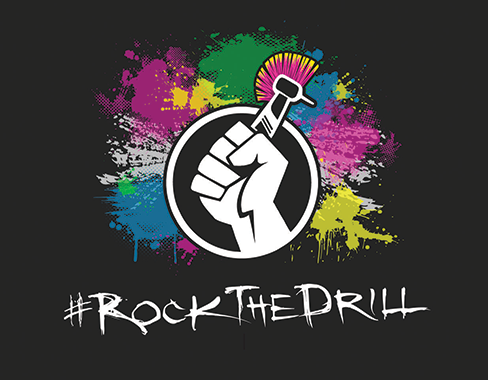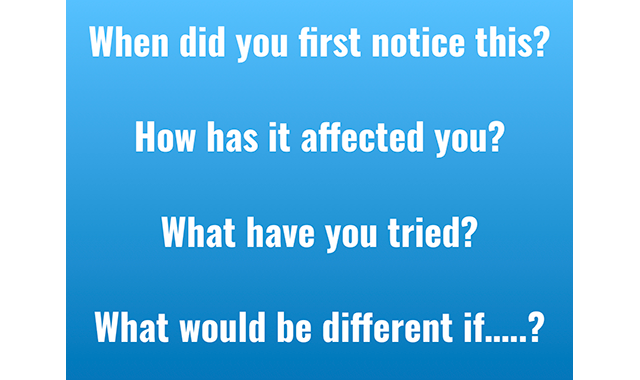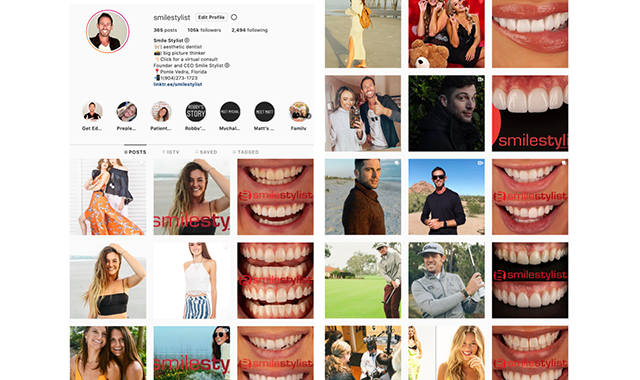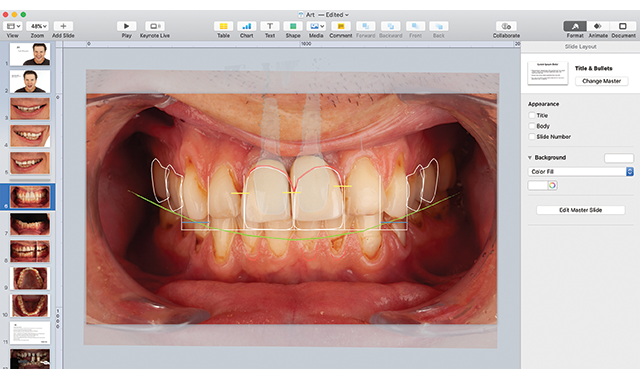How to: Deliver effective case presentations using visual and social media
Using social media in case presentation can create patient confidence and practice ‘fans.’



Presented by the faculty of Clinical Mastery Series, the New Generation of Dental Education.
Join the movement: www.clinicalmastery.com.
“Presentation” is the key word in case presentation, and it begins with the patient’s first contact with the office. Presentation has the potential to shape patient perception about the dentist’s competency and to establish a bond with patients.
When presentation is successful, trust is built with the patient, who makes an appointment and already respects your opinion. This results in increased case acceptance.
Presentation is about paying attention to details that influence case acceptance. It can be tailor-made to the case types that you would prefer to present in your office, and it can promote confidence and experience in selected services.
We have so many opportunities to capture media for case presentations. It is obvious that photography is a requirement for case presentation. We take pictures of our patients’ teeth, show them areas that are concerning, and recommend treatments.
[Fig. 1] Using a DSLR camera with studio lighting allows dentists to focus on the details of a failing system and to confidently offer treatment options.

This can be as simple as using an intraoral camera or, for higher quality presentation, a digital single-lens reflex (DSLR) camera with refined lighting (Fig. 1). In case presentation, the higher the quality, the better. Make no mistake about it: Dentistry is a big-ticket item. Think about the presentation that expensive products use to target and attract customers.
The next logical step after taking high-quality images for case presentation is to document the results of the case with high-quality images. This creates a presentation to use for a future patient.
Now, I need to talk about stories, because images really do not tell the whole story. They just show the results. Every patient who has their teeth or smile improved has a story about a struggle with their teeth and what it took to overcome that struggle and get the treatment. Asking the right questions will reveal the struggle in the story and create a valuable connection between you and the patient (Fig. 2).
[Fig. 2] Asking the right questions helps patients emotionally connect with their decision to get their mouths healthy and reassures the patient that the dentist is recommending the best options that align with their concerns.

Share another patient’s story during your case presentations to complement the high-quality images. You can also tell stories with visual media. You can play video testimonials during case presentations and post them to social media. Not all video requires words. Music has a way of creating emotional connections, too.
Sharing “after” pictures to social media that reflect the patient’s confidence with their smile is obvious stuff (Fig. 3). Even more important, this moment shows that a patient is connecting with you as the dentist-and has become a fan.
Create as many raving fans as possible. More fans create more social proof (Fig. 4). Continue to expand this circle of trust by creating more raving fans through the use of high-quality visual media and/or more targeted images and videos.
[Fig. 3] Sharing after pictures to social media is an important way to develop trust and facilitates case acceptance. Pictured is Dr. Olitsky's patient, Lauren.

[Fig. 3] Sharing after pictures to social media is an important way to develop trust and facilitates case acceptance. Pictured is Dr. Olitsky's patient, Lauren.A niche is a target demographic. If you are able to specify the type of patient you want to see in your office, you can create a buyer persona of your ideal patient and then design presentations to catch their eye. By being this specific, you run the risk of turning off some potential patients, but these customized images and videos are for your ideal customer, to create trust and to create more fans. Fans respect your opinion.
If you are convinced that photography and video are important for case presentation, then understand that being competent at visual media presentation has the potential to completely change your practice.
Now, focus on building the relationship with your patient. Show that you authentically care about your patient by asking the right questions and listening to the answers. Remember what is important to the patient and customize the case presentation and language to reassure the patient that you are recommending the best options based on their concerns. This will help them see that your values align.
[Fig. 4] If dentists want patients to have more respect for their opinions, then create more raving fans by frequently posting patients who are happy to share their smiles and good reviews.

For example, if the patient wants conservative treatment, develop more trust to create more common ground by saying something like, “I understand wanting a conservative treatment plan for your teeth because that is what I would want for my own teeth. In this case, doing more teeth will enable me to give you the most conservative treatment because if we do this one tooth at a time, I will have to grind down each tooth excessively to fit into your current bite, which is failing you.”
Then present a similar case: “For example, another patient had a similar concern (give background story about this patient), so we ended up doing all the teeth at one time. This patient did minimal preparation on the teeth, and we improved the smile at the same time.”
[Fig. 5] Organizing photos and videos as a creative package in a program such as Keynote makes case presentation easier.

You can organize case presentations in software such as Keynote, which keeps images and videos together and in sequential order (Fig. 5). This makes it simple to present a case from start to finish. Consider images and videos, digital design, provisional images, try-in images, after images, and video testimonials. You can share these packages of creative content with everyone from laboratory technicians to specialists to patients.
[Fig. 6] The results of our patient, starting with a high-quality DSLR image taken with studio softbox lighting, Adobe Lightroom editing composed in Adobe Photoshop with .eps logo.

The better you get at creatively producing high-quality content-by utilizing programs such as Keynote, Adobe Lightroom, Final Cut Pro X, and Adobe Photoshop-the easier it is to generate more presentations to share with patients, create more fans and increase case acceptance (Fig. 6).

259 Prospect Plains Rd, Bldg H,
Cranbury, NJ 08512
All rights reserved.